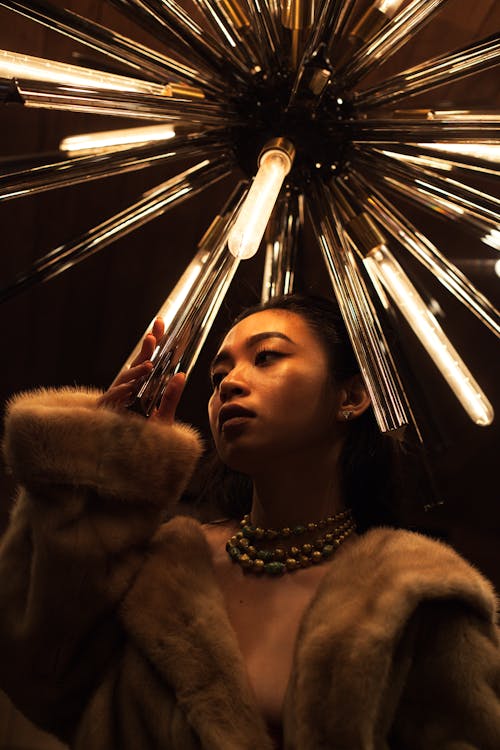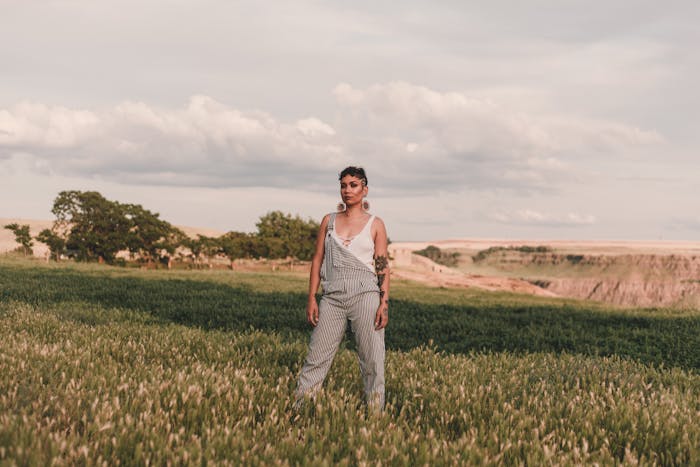
Add Personality to Your Portrait Photography
What makes a portrait photo stand out? The best portraits capture the personality of the photo subject in a creative way.
A great portrait photo makes you feel like you know the person behind the camera—or makes you wonder what it would be like to get to know them.
There are lots of guides out there on the best tips for portrait lighting, posing, and so on. (We have a very handy guide on how to find and work with portrait subjects! Consider it the prequel to this article and have a read here.)
Here, we're focusing on how to bring out personality in your portraits: how to create a portrait that shows the unique mood and character of the person in it. This all comes down to the setting, the connection you have with the subject, and the style you bring to the shot.
This is how to make each element work in your portraits for photos full of personality, with tips from two Pexels portrait photographers.
Portrait Photography Step 1: Find the right setting
You'll want more than just a plain studio backdrop to ensure your portraits pop—but you don't necessarily need to travel far to find an interesting portrait background.
Consider what kind of portrait you want to make. For an informal, documentary-style shoot, simply photographing your subject at home is perfect. They're already comfortable there, and often people's homes are a reflection of their personality, which adds authenticity to your shots.
A local park, coffee shop, book store, or interesting street in your city all make great options for portrait shoots as well. (Although you'll want to be sure to get permission from a business before embarking on a major shoot there).
Your location scouting process for portrait photos will depend on how you like to plan any photography you do: some photographers are all about pre-planning a shoot, while others prefer to go with the flow and shoot whenever inspiration strikes.
"The locations that I love are the ones that you suddenly stumble upon and it gives you a sudden sense of inspiration to shoot," says Portland photographer Jermaine Ulinwa. "Most of the locations I find are ones where I take time in a certain neighborhood looking at patterns, colors, textures, and shadows."
Obviously, when it comes to portraits, a little planning is typically needed to get your subject in front of your lens... but you can always try to go the fully-candid route! Just carry your camera with you wherever you go and get ready to annoy (or delight, let's be optimistic) your friends by snapping portraits of them whenever the moment is right.
This is often how photographer and Pexels content lead Daria Shevtsova shoots. "To me it’s more about telling a story, where both the person in the frame and location are equal heroes. The shot itself may not turn out to be a portrait, but hopefully the emotion would be there."
Daria also makes a habit of recording potential shoot locations (with a "memory snap" or an actual phone photo) whenever she spots them. "I don’t go out looking for the location, but just stumble upon them from time to time—and when I see one, I usually know right away what I’d want to photograph there."

"For this shot I wanted to give the literal feeling of 'giving her the stars and the moon' and what that would look like."
Photo, kuvaaja Jermaine Ulinwa · Näytä Photo
Portrait Photography Step 2: Create a connection
Here's a sneaky way to ace this step: try photographing your closest friends and family members before leveling up to folks you don't know well. Especially when you're new to portrait photography, working with people you already know ensures that there's already a connection there on the shoot—and this will tend to make for better portraits.
This is Jermaine's number one tip for beginner portrait shooters: "For those starting, I suggest photographing your loved ones first to get a sense of comfortability and use that to translate your eye to other people."
When photographing subjects you don't already know, luckily there are a few simple ways to build connection that will help produce a smoother shoot and more authentic photographic results.
Jermaine recommends a casual, low-key shoot during which you spend a few hours with your subject, just documenting them going about their day. "Another approach is I use is striking up a conversation or telling light hearted jokes." Keep things light and fun on the shoot and you'll go a long way towards making your subject feel at ease in front of the camera.
Connection is especially key for great candid portraits. Daria says that the best candid portraits happen when "the person in front of the camera feels comfortable and safe around the photographer, or is not noticing the photographer at all."
For portraits that feel genuine, let your portrait subject take the lead and focus on capturing how they feel, rather than trying to guide them too much. "I like capturing real emotions, and if the person is light and cheerful, this will get reflected in the shots," says Daria. She takes a more hands-off approach to portraits. "I never enhance the person’s mood or tell them what to do. I will set up a space, a background, an atmosphere, set a narrative—but the actions of the person are just improvisation."

Don't be afraid to step back when shooting portraits.
Photo, kuvaaja Jermaine Ulinwa · Näytä Photo
Portrait Photography Step 3: Add some style
A portrait is a collaboration between the photographer and the subject. The person in the shot brings their unique personality and vibe—and as the photographer, you also bring your unique artistic personality to the images that result.
There are so many ways you can let your individual style shine through for a great portrait. Jermaine gets creative with lens filters for psychedelic images. The kaleidoscope and star filters are favorite choices of his, as seen in the cover photo of this piece. "Both lens filters are relatively cheap and I highly recommend using them if you ever feel creative and want to add some pop to your images."

Jermaine chose boxer gloves as the prop for this shoot to convey a sense of strength.
Photo, kuvaaja Jermaine Ulinwa · Näytä Photo
Adding props to a portrait shoot can also be a fun way to collaborate with your subject for interesting results. Be intentional about the props you choose, and discuss your thought process with your portrait subject. "A major tip for using props is to make sure that they don’t distract the viewer from the message you are trying to convey; that instead they add value and weight," says Jermaine. "When considering if you should use a prop, ask yourself why."
Daria brings her own aesthetic to her portrait work by frequently shooting with film—it lends a special look to portrait imagery. "I don’t work that much with black and white, but I like to shoot portraits with black and white film," she says. "My favourite is Kodak Tri-x 400. To me that film brings out a level of depth in portraits. It also has a nice grain."
Refining your own portrait style means lots of experimentation. Try tons of different portrait photo ideas and see what stays with you. Some portrait photographers find visual power in shooting many different subjects in a very similar style, whereas others prefer to focus more on the unique characteristics and surroundings of their subjects.
Artist Cindy Sherman) is famous for her endlessly fantastical portraits of herself in diverse costumes and scenarios, while the pioneering portraitist Diane Arbus) and contemporary photographer Rineke Dijkstra shine a light on the lives of real people through their documentary portraits. Portraiture is a photography genre with seemingly endless possibility for new ideas.











